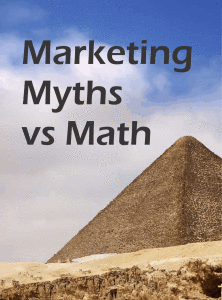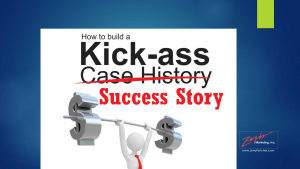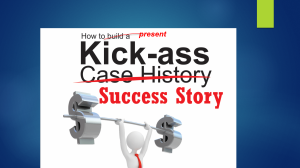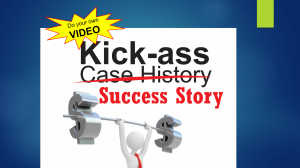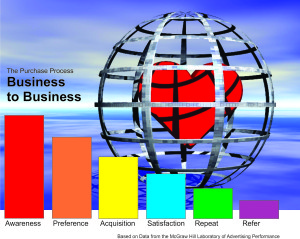30-Second Marketing for Consultants Part 3
Henry, a guest at the lunch time gathering, asked, “If you’re a one man band like most beginning consultants what is the difference between marketing and sales. Isn’t it all one?” 
“In a way it is,” said Kate. ”That was hard for me to understand early on when I was setting up my sales consultancy. When you’re out there on the front lines it’s not easy to see how marketing can do anything to help you. Let’s face it, most sales people keep telling whoever is doing their marketing to just get them some qualified leads to close. When you’re the one doing the marketing and the selling it tends to give you a different viewpoint.”
The problem is the crossover.
“The problem is the crossover,” Henry said. “I don’t know when I’m selling and when I’m marketing.”
Our writer/editor Gail said, “The difference is pretty simple. Marketing is in mass. Sales is one on one.”
“Okay, I can see that,” said Henry, “but the words required seem to be different while they are the same.”
Gail asked, “What do you mean?”
“Everybody says that you need to talk about delivering a benefit. That’s the way to get them to come to you,” Henry replied.
Media, Message and Magnetism
I’d brought Henry to this meeting with the marketing lunch bunch so I figured I’d better wade in. “Henry,” I said, “don’t confuse trying to write copy for an ad versus a brochure or a web site with developing a sales pitch.
Media—If the information you are presenting is paid for by you it is marketing and needs to be treated as such. That is true whether it is an ad, brochure, website or skywriting. Yes, benefits should be stated.
Message—If you are not meeting someone in person, it is marketing and needs copy that positions the product or service in words and pictures. You need to convince and/or persuade by using text and graphics that are easily understood by the suspect, prospect or client.
Magnetism—comes as you learn how to speak in the language of your suspect, prospect or ideal client. Speak to them in person. Listen. Hear and use their words to describe what you do. Listen as they tell you the problem they have and describe it in their terms. Pay close attention to what they say about how a solution to their problem would look, taste and feel to them.
Here’s an example of the difference:
Positioning Line: Clock Thermostat
Ad headline: Live warm, sleep cool and wake up saving money.
30-Second Marketing:
Hook: I help you save money while you’re sleeping
Hold: You know how some people set the thermostat back when they go to bed to save money but have to get up to a cold house in the morning?
Pitch: What we do is hook the thermostat to a clock so you set it once and it automatically cools things down at night then automatically starts heating the house in the morning so it is warm when you get up.
Close: It’s available in a battery operated version with all the instructions you need to hook it up yourself in minutes.
Henry said, “Thanks. That helps.”
The Takeaway:
The concepts that convince for any product or service must be expressed in both print and conversation. Only conversation is interactive and can be modified on the fly.
The words that persuade can (and should) be pulled from the ideal client’s lexicon.
How and when they are used are dictated by whether you are marketing or selling.
Jerry Fletcher’s blog recaps conversations with clients, prospects and the unruly mob of business development professionals he consorts with. They discuss marketing that works from solopreneur to enterprise level. Jerry, The Consultant’s Communication Consultant, is the ringleader and “Watson” of the dialogue. Sign up for the blog and other publications at: www.JerryFletcher.com/Profit.html
Jerry has been researching and implementing small business marketing that builds businesses, careers and lives of joy for 25 years as President of Z-axis Marketing, Inc. Learn more at www.JerryFletcher.com
Schedule a personal appearance. Jerry speaks internationally on Networking, Marketing and Contact Relationship Magic. www.NetworkingNinja.com



